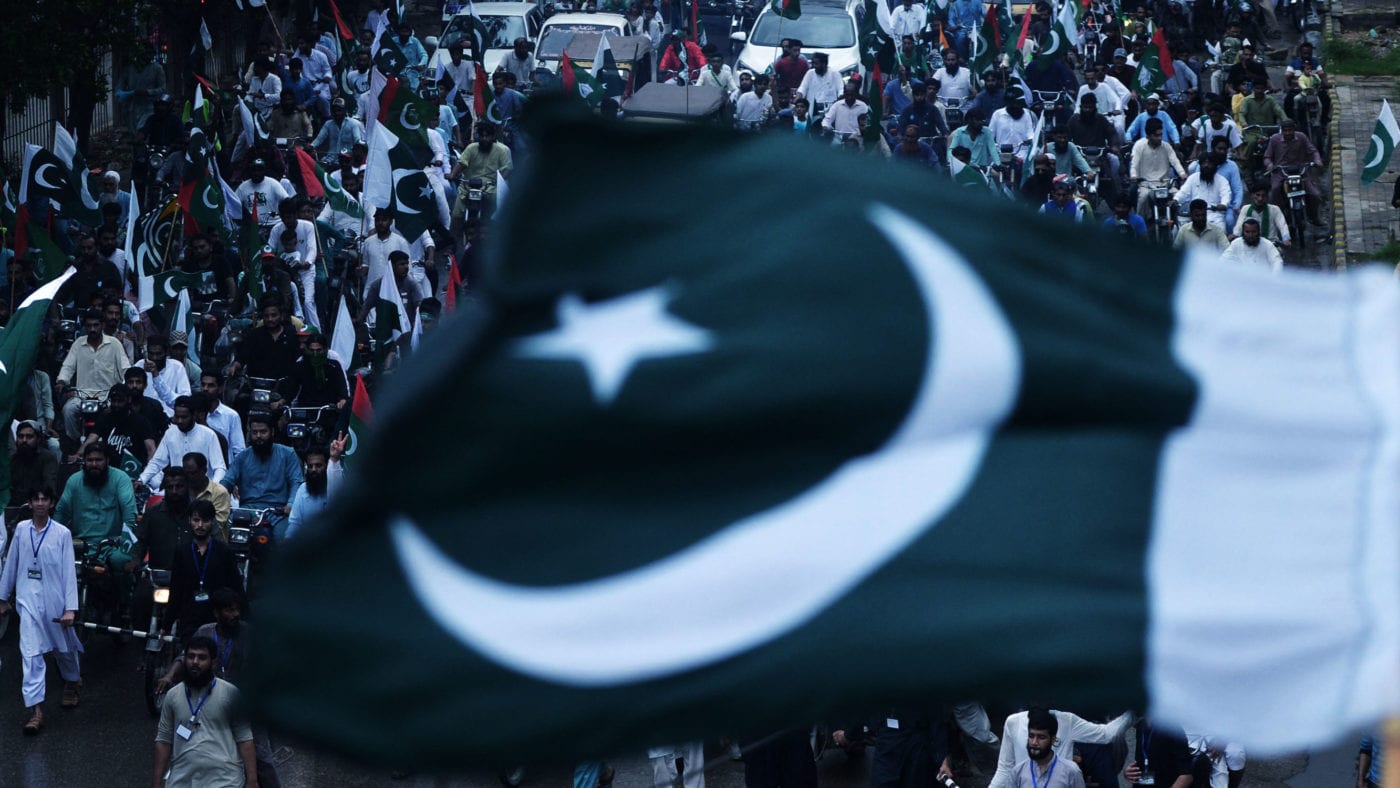Yesterday Pakistan celebrated its 75th Independence Day. It should be a cause for celebration, but unfortunately just serves as a reminder that the country is still beset with problems and has failed to live up to its potential.
In the 1960s Pakistan was seen as a model of economic development and touted as the next Asian Tiger. But while other Asian countries have enjoyed rapid, sustained economic growth, Pakistan has not. So what has gone so wrong?
As with many other developing country, a combination of political instability and corruption has blighted Pakistan throughout its history, making it difficult to sustain the right economic policies or to attract foreign investment. That instability has in turn made the country a fertile ground for Islamist extremism.
It’s hard to overstate the way corruption permeates Pakistan’s society and economy. Everything from politics to healthcare, education and the judiciary is riddled with bent officials, backhanders and bribes. It’s little surprise, therefore, that Transparency International ranks the country 140th in the world for the probity of its public officials.
That level of graft is a disaster for ordinary Pakistanis forced to pay bribes to access basic services, but also for the country’s broader economic outlook. A corruption-addled economy means endless misallocation and overspending of public money, and a lack of tax revenue to fund healthcare, schools and infrastructure.
Contrast Pakistan’s experience with somewhere like Singapore, a nation that went from poverty in the 1960s to become one of the world’s most prosperous places. The country’s first prime minister Lee Kuan Yew knew just how deleterious corruption could be for a developing economy and adopted a zero tolerance approach, combined with paying public officials well enough that they weren’t tempted by bribes.
But it’s not just corruption hampering Pakistan’s growth.
If you compare things such as GDP growth and purchasing power parity (PPP), Pakistan is doing far worse than neighbouring India and Bangladesh. The average person in Pakistan consumes more than the average Bangladeshi and roughly the same as the average India, but while India and Bangladesh are spending money on investment, Pakistan is focussed on consumption.
To prop up its high consumption levels, Pakistan over-values its exchange rate and borrows heavily in order to sustain high levels of imports. This works fine for a while, but then the country risks a run on the Pakistani Rupee and everything comes tumbling down. This cycle has meant repeated IMF bailouts, the latest of which was a $6bn injection last month.
So, what can Pakistan do to achieve sustainable economic growth?
There is no silver bullet here, and the best solutions can differ between countries. But along with tackling corruption – always easier said than done – Pakistan it needs to follow the example of its neighbours and start investing more. It needs to invest in transport infrastructure such as roads and railways to make it easier for goods to be transported and people to get to work, boosting productivity and to borrow a phrase beloved of our own government, levelling up areas outside the major cities.
There also needs to be more investment in education and healthcare in order to increase human capital. Pakistan performs poorly compared to practically every other country in terms of investing in healthcare and education. To give one glaring example,. approximately 60 million Pakistanis are illiterate – a problem that is particularly prevalent in rural areas.
None of this will be possible, however, without root-and-branch tax reform. To a Western audience the dysfunction of Pakistan’s tax system is difficult to even comprehend. As journalist Yousuf Nazar notes (emphasis mine):
When General Musharraf left in 2008, Pakistan’s tax to GDP ratio was 9%. For the year ended 30 June 2021, it was 8.6%. For the tax year 2021, only 2.2 million (out of a population of 225.18 million) filed their income tax returns. Pakistan’s tax to GDP ratio is among the worst in the world and has not improved for a very long time.
Nazar himself suggests a sensible menu of reforms that have worked in other countries. Dramatic simplifcation, relatively low maximum rates to discourage evasion, and simple administration that takes advantage of existing digital technology. None of this is revolutionary stuff, but it would have a profound effect on Pakistan’s public finances.
Boosting trade is another important priority. As this study suggests, a more liberal trade policy is one surefire way for Pakistan to enhance its economic growth. That means continuing to embrace imports, while also having a strong focus on exporting goods.
As for corruption, again there is no panacea, but a Singapore-style combination of better pay for public officials and tough sanctions against those found guilty would certainly be a start. It is also encouraging that the IMF has insisted that Pakistan introduce an anti-corruption taskforce in order to receive the most recent bailout. The same should be the case for any UK aid going to Pakistan: without the structural reforms the country needs, aid spending is throwing good money after bad.
Click here to subscribe to our daily briefing – the best pieces from CapX and across the web.


